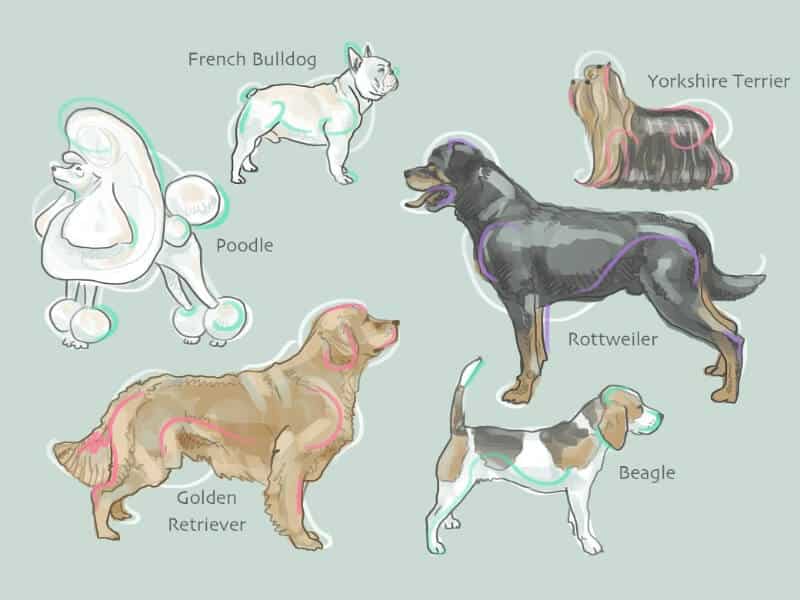Watch out for Kennel Blindness! – The Perfect Dog Has Yet to Be Produced!
In my 50 years in this wonderful sport of purebred dogs, I have never seen, nor have I ever heard, anyone proclaim they have seen or produced the “perfect” specimen of their breed. All of us, of course, have our opinions as to what that “perfect” specimen should look like—and that is what anyone who breeds strives to achieve.
It is also safe to say that over the years I have seen many outstanding, excellent representatives of their breeds. There is also an abundance of very good dogs that we see regularly.
As breeders, it is my firm belief that our first priority is to “do no harm” to our breed. We must stay vigilant in prioritizing health, temperament, and type. We have many high-quality breeders who go way above and beyond in doing their due diligence in researching pedigrees, and health and other issues, in the dogs they choose to use in their breeding program.
As breeders, it is my firm belief that our first priority is to “do no harm” to our breed.
Part of that due diligence is the need to be objective and not succumb to “kennel blindness” when evaluating their breeding stock.
A few months back, I had a conversation with a very successful breeder. We were discussing possible stud dogs for a particular bitch in her program. Two things stuck out to me after thinking about our conversation. The first was that this person would not even consider one dog because of who the owner was. I have heard this type of comment many times over the years and I know there are, in some cases, valid reasons for this. However, if that person owns the stud dog that you feel has the traits, pedigree, and health clearances you are looking for, it might be a wise move to put personal feelings aside to assist you in achieving your goals.
The second thing was the one that stuck with me. When I asked this individual in which areas she was particularly looking for improvements, she replied, “None, this bitch is perfect. I just don’t want to lose what I have.” This reply took me by surprise. As I mentioned earlier, I have never met anyone who has seen the perfect specimen, but now I was wrong—as this person has. My first thought was “wow!” My next was that I don’t think I would want to breed one of my stud dogs to this bitch because she was already “perfect” and anything less than “perfect” that she produced would be because of the stud dog.
I know that as a breeder we must be able to truly and honestly evaluate our breeding stock. We need to recognize where we may be lacking, where we are strong, and what are the traits and genetic makeup of our dogs. We must understand what is behind the dogs in question for the possible breeding we may be considering; which traits are dominant as well as if there is something back in the pedigree that might suddenly jump out and reappear.
We all know that some breeders don’t always share the right kind of information with people who inquire about their sires and dams. Being a good breeder requires us to do our research on health issues such as epilepsy, any heart, eye or blood disorders, hip or other types of dysplasia, and many other health problems that may be known to exist in that breed. We also need to share information about bites and any other type of physical issues that may exist within or behind the pedigrees of our breeding animals.
I think we have many breeders who consistently produce high-quality, healthy, and successful representatives of their breed and can have that consistent look that they identify with regarding breed type. This does not happen by accident. These people will also tell you that in some cases the best-laid plans do not always produce the desired results. These breeders are also wise enough to know how to learn from those breedings which may not have turned out how they had foreseen, and are able to move forward in their quest for “perfection.”
Unfortunately, we also have people who call themselves breeders but do not know or understand how to establish, maintain, and improve their breeding programs. These people will often breed to one of the top-ranked winners or a dog owned by a friend. These are often also the people who lack consistency in their lines.
There are also those occasional “flyers.” These are the offspring that are very nice representatives of a breed but, based on the pedigree and parents, are much better than most breeders would have expected from that breeding. These are indeed very nice dogs and will hopefully produce the same quality in their offspring. But moving forward, the owners and breeders need to be careful to research the backgrounds behind them.
Kennel Blindness will, at one time or another, probably strike most of us at some point in our careers. To be successful, we need to be careful not to get caught up in it or we may lose our way in our plans to achieve that “perfect specimen” that we all hope to achieve someday.
Watch out for Kennel Blindness!










